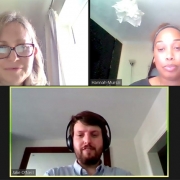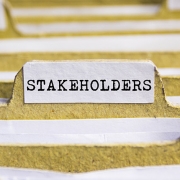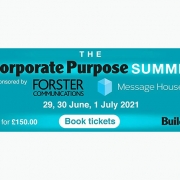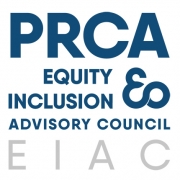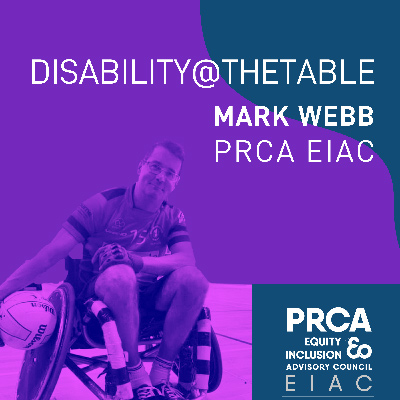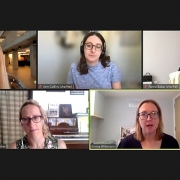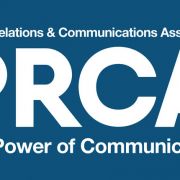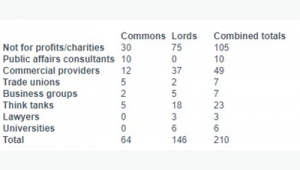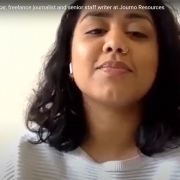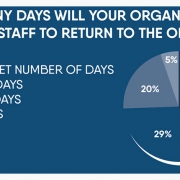2021 trends so far in PR and communications
Back in December, we asked a selection of thought leaders working across PR and communications for their predictions on the big trends coming up for the industry in 2021.
Ethics, fake news, the growth of digital and opportunity in disruption were some of the topics that came up at the time, so we caught up with Sarah Waddington, Shayoni Lynn, Stuart Thomson, Kerry Sheehan, and Tolu Akisanya to see how things have panned out so far…
Upcoming areas of opportunity – healthcare, policy and change
‘COVID is nowhere near over and businesses have never needed professional comms support more. Specific industry experience will be a huge boon as the economy opens up further. Those with experience in healthcare comms and economic development will continue to do particularly well.’
Sarah Waddington, Astute.Work and #FuturePRoof
‘It seems that, under Boris Johnson at least, interventionist governments are here to stay. There are very few areas of life that the Government doesn’t seem to have an opinion, or policy, on. The big opportunity, and threat if not addressed, is for organisations to engage with Government to ensure the policies work. There will be no more obvious policy area where this applies than climate change. With COP26 coming, the Government will need to make some big policy announcements to accompany the impressive targets it has set. Engagement will be critical throughout and beyond this time.’
Stuart Thomson, BDB Pitmans
Digital data is an essential part of the modern PR toolkit
‘Data, digital and understanding of human behaviour will continue to be an important driver for effective, strategic communications. Why are we doing it? What do we want people to do? How will be measure it?’
Shayoni Lynn, Lynn PR
‘Because of the pandemic last year, brands and organisations have had to shift their attention to digital; I think there will be a conscious effort to continue this, with a focus on building online communities. There’s an opportunity here for strengthened loyalty, genuine interaction, and not just for our clients but also with peers and the wider industry. Ariatu PR’s work with new authors is a great example of this; working with new authors, from diverse and underrepresented backgrounds, raising awareness for these authors (that statistically would have been overlooked in the past), creating new communities and reaching new audiences. The organisation also has built a great interactive community online, with other PR professionals, journalists, and the wider industry and created a strong reputation of being knowledgeable, approachable and impactful.
‘Some other great examples over the last few months include the fantastic Weetabix x Heinz Twitter thread, and Marcus Rashford’s School Meals campaign, both of which started online and went on to captivate the nation, lead to wider discussions offline, and ultimately changed behaviours.’
Tolu Akisanya, Ariatu Public Relations
Accountability and ethics
‘For public affairs as a profession, there is no doubt that the texting habits of politicians, for example, have adversely impacted on our reputation. The rules that he [David Cameron] put in place, which everyone said were lacking at the time, did not prevent him from doing whatever he wanted without fear of retribution.’
Stuart Thomson
‘There has been an increased expectation for accountability. Last year, there was pressure for brands and organisations to be seen saying the right (socially conscious) thing, this year they have been asked to show the work behind their public claims. It’s no longer enough to pay lip service to global issues, organisations and brands be must be seen to authentically follow up with real-life changes and examples, and not just performative PR activities, they must work much harder now to be genuine and transparent to build trust and relationships with their audiences.’
Tolu Akisanya
The fast pace may not ease up
‘We’re returning to urgent planned and unplanned work, and supporting organisations, businesses and brands to move to a place of not only surviving but thriving in their evolved ways of doing things and their accelerated transformation and innovation as a result of the pandemic.
‘Some are still trying to fathom this out and even though some economies have seemingly bounced back to a better than anticipated place at this stage, we are seeing behaviours continue to adapt and change at a faster pace than before. This continues to be a big challenge for us to ensure we can land our communication right to ensure the compliance, buy-in, take-up and so on we require.
‘There has been no let up. There never will be. Working at pace is the norm now.’
Kerry Sheehan, Business innovation and communication advisor
Big surprises of 2021 so far?
‘The refocus of gaining coverage in alternative media – which I love! Over the last year or so, one of the biggest challenges was being able to effectively cut through the global stories dominating the news in hand with changes in content consumption. Many practitioners were able to quickly pick up on this and pivoted, to utilise smaller, more localised and niche media outlets, to reach their target audiences.’
Tolu Akisanya
‘The way that the Government has tried to shift the Covid-19 public inquiry off until mid-2022 is surprising given that another wave of infections are widely expected for later in 2021. The political imperative of putting the findings of a public inquiry off until some future date seems to have outweighed the potential health benefits of learning lessons sooner rather than later. If you want a prediction for 2022 then it will be how much the inquiry will dominate public life as the evidence starts to be heard.’
Stuart Thomson
‘The amount of communicators tuning into and building on their emotional intelligence, and using this to build relationships. The need for emotional skills, the cornerstone of employee and audience engagement but also competitive advantage, will continue to grow and could even outpace the demand for cognitive skills in the future.’
Kerry Sheehan
PR continues to show its value
‘COVID-19 may be one of the worst natural disasters global society has faced in recent years, but it has been good for the public relations industry which has been able to pretty bullishly demonstrate its value to business, not least through stakeholder engagement and internal comms. The biggest challenges have been managing demand and helping the hardest hit industries get back on their feet, closely followed by a talent shortage at the account manager level. The ongoing concern is how to keep PR in front of management teams so they continue to appreciate what it delivers and invest appropriately.’
Sarah Waddington
‘Public sector comms teams continue to knock it out of the park with COVID-19 comms – huge respect to everyone working through this tirelessly, especially colleagues in public health. This has contributed to our excellent vaccination numbers with more people than expected taking up the vaccine, helping us all move towards some sort of ‘normalcy’.’
Shayoni Lynn
‘Some of the biggest achievements for the industry this year – embracing change, mastering the art of the pivot, and finding new ways to be creative and communicate our products/services and clients. Despite starting the year in the middle of a pandemic we’ve really been able to highlight our value in our ability to adapt, be creative and deliver effective PR campaigns. The #GettyMuseumChallenge is a great example of pivoting, increasing brand awareness, and building a community of art-lovers from user-generated content on instagram.’
Tolu Akisanya
‘I am continually impressed by how resourceful people have been during the continued lockdown, on a personal and professional level. We all need picking up sometimes and my network across PR and comms has always been there. It is fantastic how many organisations really are thinking about the wellbeing, especially the mental wellbeing, of their people.’
Stuart Thomson
Looking for more from our PR and communications trends predictors?
Interview with Stuart Thomson about his PR & Comms Best Influencer win at the 2020 Online Influence Awards
Sarah Waddington’s #FuturePRoof Five


